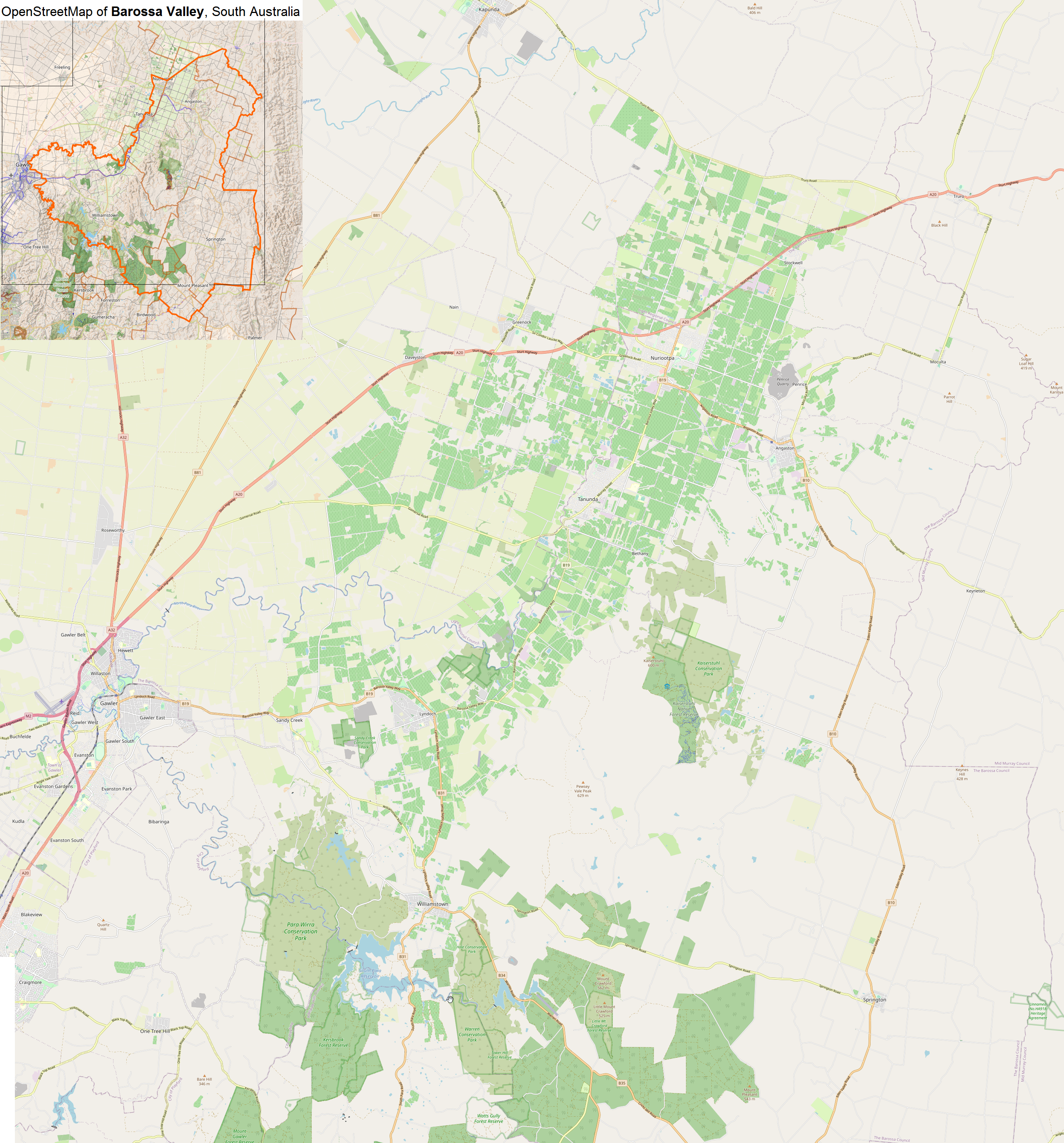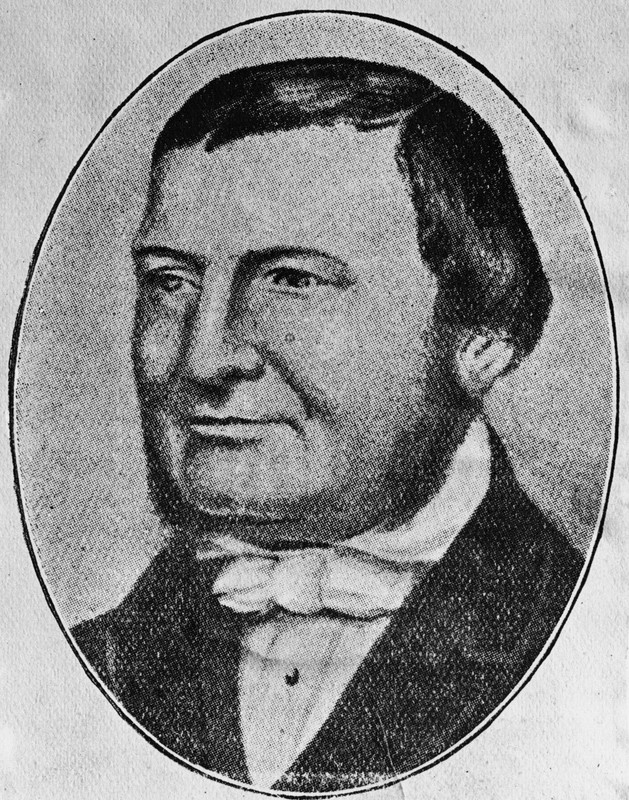|
Tanunda, South Australia
Tanunda is a town situated in the Barossa Valley region of South Australia, 70 kilometres north-east of the state capital, Adelaide. The town derives its name from an Aboriginal word meaning ''water hole''. The town's population is approximately 4600. The postcode is 5352 Settlement Prussian immigrants who arrived with Pastor Gotthard Fritzsche founded the village of Bethanien in 1842, the first settlement in the vicinity of today's Tanunda. One year later, Prussians relocating from Klemzig on the Torrens River, where they had settled upon immigrating in 1838 with Pastor August Kavel, came to the Barossa Valley and founded the village of Langmeil. Their new community bore the name of a Prussian town near Zullichau, from where the settlers had originated; it is now a Polish village known as Okunin. Sometime later, another village was founded and named Tanunda. Due to anti-German sentiments, both Langmeil and Bethanien were renamed during the Great War to Bilyara and Bet ... [...More Info...] [...Related Items...] OR: [Wikipedia] [Google] [Baidu] |
Mengler Hill
Mengler Hill (formerly Mengler's Hill) is a hill and popular lookout in the Barossa Range, South Australia. The hill was named after an early wine grower in the area. The Barossa Sculpture Park is sited at the base of the lookout area. The road route from Tanunda to Angaston crosses Mengler Hill. See also *Barossa Valley The Barossa Valley ( Barossa German: ''Barossa Tal'') is a valley in South Australia located northeast of Adelaide city centre. The valley is formed by the North Para River. It is notable as a major wine-producing region and tourist destinati ... References External links Barossa Sculpture Park Barossa Valley Mountains of South Australia Hills of Australia {{SouthAustralia-geo-stub ... [...More Info...] [...Related Items...] OR: [Wikipedia] [Google] [Baidu] |
Barossa Valley
The Barossa Valley ( Barossa German: ''Barossa Tal'') is a valley in South Australia located northeast of Adelaide city centre. The valley is formed by the North Para River. It is notable as a major wine-producing region and tourist destination. The Barossa Valley Way is the main road through the valley, connecting the main towns on the valley floor of Nuriootpa, Tanunda, Rowland Flat and Lyndoch. The Barossa Trail walking and cycling path is long and also passes the main towns from near Gawler on the Adelaide Plains to Angaston to the east of the valley. History The traditional owners of the land including the Barossa Valley are the Peramangk people, who comprise a number of family groups. Evidence of their thousands of years of occupation can be seen all around the area, in the form of artefacts, scar trees and shelter paintings. The Barossa Valley derives its name from the Barossa Range, which was named by Colonel William Light in 1837. Light chose the name in ... [...More Info...] [...Related Items...] OR: [Wikipedia] [Google] [Baidu] |
Turkey Flat
Turkey Flat is an Australian winery located in Tanunda, in the middle of South Australia's Barossa Valley wine-growing region. It is described by wine expert Oz Clarke as one of the "cult wines" of Australia.Clarke, Oz. ''Oz Clarke's Australian Wine Companion: an Essential Guide for All Lovers of Australian Wine'' pg 20 Orlando, Florida: Harcourt, 2004 With more than 40% of its production dedicated to ''rosés'', Turkey Flat has been considered a leader in the recent "rosé revival" trend of the early 21st century.J. Gordon (ed) ''Opus Vino'' pgs 721-722, DK Publishing New York 2010, The history of Turkey Flat wines began in 1847 when Johann Frederick August Fiedler planted Shiraz vines near Bethany Creek. The vines planted in 1847 are some of the oldest vines used for commercial wine production today and believed to be the world's oldest vines that have been authenticated.G. Harding ''"A Wine Miscellany"'' pg 19-20, Clarkson Potter Publishing, New York 2005 However, ano ... [...More Info...] [...Related Items...] OR: [Wikipedia] [Google] [Baidu] |
Vineyards
A vineyard (; also ) is a plantation of grape-bearing vines, grown mainly for winemaking, but also raisins, table grapes and non-alcoholic grape juice. The science, practice and study of vineyard production is known as viticulture. Vineyards are often characterised by their ''terroir'', a French term loosely translating as "a sense of place" that refers to the specific geographical and geological characteristics of grapevine plantations, which may be imparted to the wine itself. History The earliest evidence of wine production dates from between 6000 and 5000 BC. Wine making technology improved considerably with the ancient Greeks but it wasn't until the end of the Roman Empire that cultivation techniques as we know them were common throughout Europe. In medieval Europe the Church was a staunch supporter of wine, which was necessary for the celebration of the Mass. During the lengthy instability of the Middle Ages, the monasteries maintained and developed viticultural prac ... [...More Info...] [...Related Items...] OR: [Wikipedia] [Google] [Baidu] |
World War I
World War I (28 July 1914 11 November 1918), often abbreviated as WWI, was one of the deadliest global conflicts in history. Belligerents included much of Europe, the Russian Empire, the United States, and the Ottoman Empire, with fighting occurring throughout Europe, the Middle East, Africa, the Pacific, and parts of Asia. An estimated 9 million soldiers were killed in combat, plus another 23 million wounded, while 5 million civilians died as a result of military action, hunger, and disease. Millions more died in genocides within the Ottoman Empire and in the 1918 influenza pandemic, which was exacerbated by the movement of combatants during the war. Prior to 1914, the European great powers were divided between the Triple Entente (comprising France, Russia, and Britain) and the Triple Alliance (containing Germany, Austria-Hungary, and Italy). Tensions in the Balkans came to a head on 28 June 1914, following the assassination of Archduke Franz Ferdin ... [...More Info...] [...Related Items...] OR: [Wikipedia] [Google] [Baidu] |
Australian Place Names Changed From German Names
During World War I, many German or German-sounding place names in Australia were changed due to anti-German sentiment. The presence of German-derived place names was seen as an affront to the war effort at the time. The names were often changed by being anglicised (such as Peterborough), or by being given new names of Aboriginal origin (Kobandilla, Karawirra) or in commemoration of notable soldiers ( Kitchener and Holbrook) or World War I battlefields (Verdun, The Somme). New South Wales Queensland South Australia The South Australian ''Nomenclature Act 1917'' authorised the compilation and gazetting of a list of place-names contained in a report of the previous October prepared by a parliamentary "nomenclature committee", and authorised the Governor of South Australia, by proclamation, to "alter any place-name which he deems to be of enemy origin to some other name specified in the proclamation".''Nomenclature Act 1917 (SA)' /ref> The table below includes the 69 c ... [...More Info...] [...Related Items...] OR: [Wikipedia] [Google] [Baidu] |
Okunin
Okunin (german: Langmeil) is a village in the administrative district of Gmina Sulechów, within Zielona Góra County, Lubusz Voivodeship, in western Poland. It lies approximately east of Sulechów and north-east of Zielona Góra Zielona Góra is the largest city in Lubusz Voivodeship, located in western Poland, with 140,403 inhabitants (2021). Zielona Góra has a favourable geographical position, being close to the Polish-German border and on several international road .... References Okunin {{ZielonaGóra-geo-stub ... [...More Info...] [...Related Items...] OR: [Wikipedia] [Google] [Baidu] |
August Kavel
August Ludwig Christian Kavel (3 September 1798 – 12 February 1860) was a founder of Lutheranism in Australia. Training and early ministry Kavel was born in Berlin, where he attended the '' Gymnasium zum Grauen Kloster'' school and went on to study theology. In 1826, he was ordained and installed as the Pastor at the church in the village of Klemzig, located near the city of Züllichau (Sulechów) in what as then the German state of Prussia and is now Klępsk, Poland. Between 1798 and 1840, the Protestant churches in Prussia had been subjected to a number of changes, brought about by the decrees of King Frederick William III. These decrees were intended to unify the Lutheran and Reformed Churches into one Evangelical Christian Church. By 1826, there was some opposition to the intentions of Frederick William. This escalated in 1830, when Frederick William announced a number of changes that outlawed the traditional rites of the churches and prescribed a form of worship which ma ... [...More Info...] [...Related Items...] OR: [Wikipedia] [Google] [Baidu] |
Torrens River
The River Torrens , (Karrawirra Parri / Karrawirraparri) is the most significant river of the Adelaide Plains. It was one of the main reasons for the siting of the city of Adelaide, capital of South Australia. It flows from its source in the Adelaide Hills near Mount Pleasant, across the Adelaide Plains, past the city centre and empties into Gulf St Vincent between Henley Beach South and West Beach. The upper stretches of the river and the reservoirs in its watershed supply a significant part of the city's water supply. The river is also known by the native Kaurna name for the river—Karrawirra Parri or Karrawirraparri (''karra'' meaning redgum, ''wirra'' meaning forest and ''parri'' meaning river), having been officially dual-named in 2001. Another Kaurna name for the river was Tarndaparri (Kangaroo river). The river was thought to be a reflection of the Milky Way ("wodliparri"), and was the heartland of the Kaurna people, who lived along its length and around the tribu ... [...More Info...] [...Related Items...] OR: [Wikipedia] [Google] [Baidu] |
Klemzig, South Australia
Klemzig is a suburb of Adelaide in the City of Port Adelaide Enfield. It was the first settlement of German immigrants in Australia and was named after the village of Klemzig in what was then German Prussia and is now Klępsk in western Poland. Background The initial establishment of Klemzig as an Old Lutheran settlement in the South Australian Colony is attributed to a decision by Pastor August Ludwig Christian Kavel. Pastor Kavel was determined to help his loyal parishioners emigrate from Brandenburg, Posen and Silesia to escape religious persecution by King Friedrich Wilhelm III of Prussia. Pastor Kavel initially planned to move his parishioners to Russia near the Black Sea, where there were already numerous German settlements, but that had proved not to be feasible. Early in 1836, Kavel travelled to Hamburg to investigate possible emigration to America, but lack of available financial assistance caused this plan to collapse. While in Hamburg, Kavel heard of the ... [...More Info...] [...Related Items...] OR: [Wikipedia] [Google] [Baidu] |
Gotthard Fritzsche
Gotthard Daniel Fritzsche (20 July 1797 – 26 October 1863)The gravestone has birthdate as 20 June 1797, not July ("''Geboren'' 20. Juni 1797"). was a Prussian-Australian pastor who became instrumental in furthering that religion in South Australia. He was born in Liebenwerda, in the Electorate of Saxony, Germany, and migrated to Australia in 1841. From 1842–1863, he was pastor of the Evangelical Lutheran Church. He died and was buried at Lobethal, South Australia. Early Life, Training, and Early Ministry Gotthard Fritzsche was born in Liebenwerda, in the Electorate of Saxony, where his father was town musician. He attended gymnasium in Dresden, but while studying, his hometown became part of Prussia following the Congress of Vienna, so he was required to enter military service for a short period. He went to Breslau after his gymnasium training, to receive his university training. There he studied under Johann Gottfried Scheibel. As was customary, after his university educa ... [...More Info...] [...Related Items...] OR: [Wikipedia] [Google] [Baidu] |





